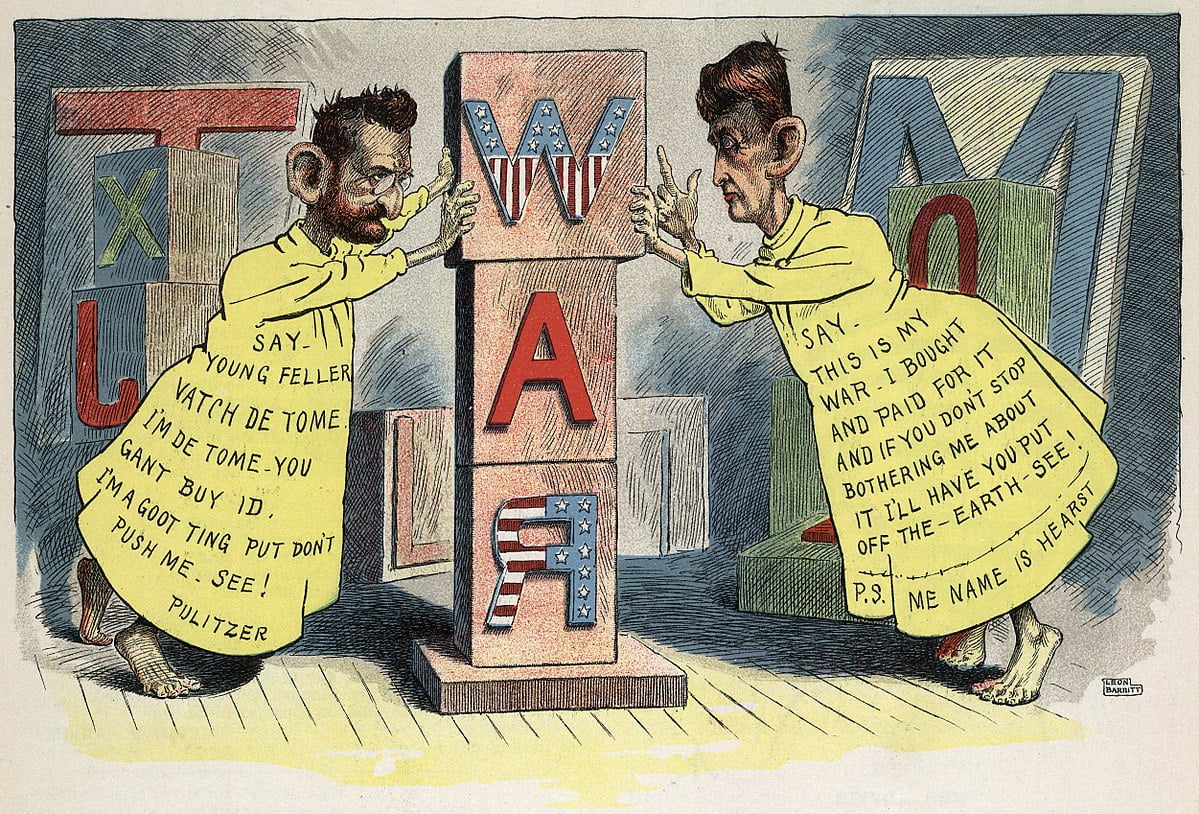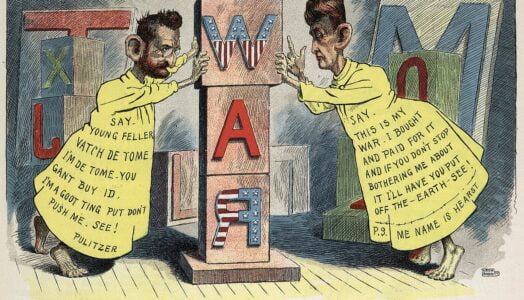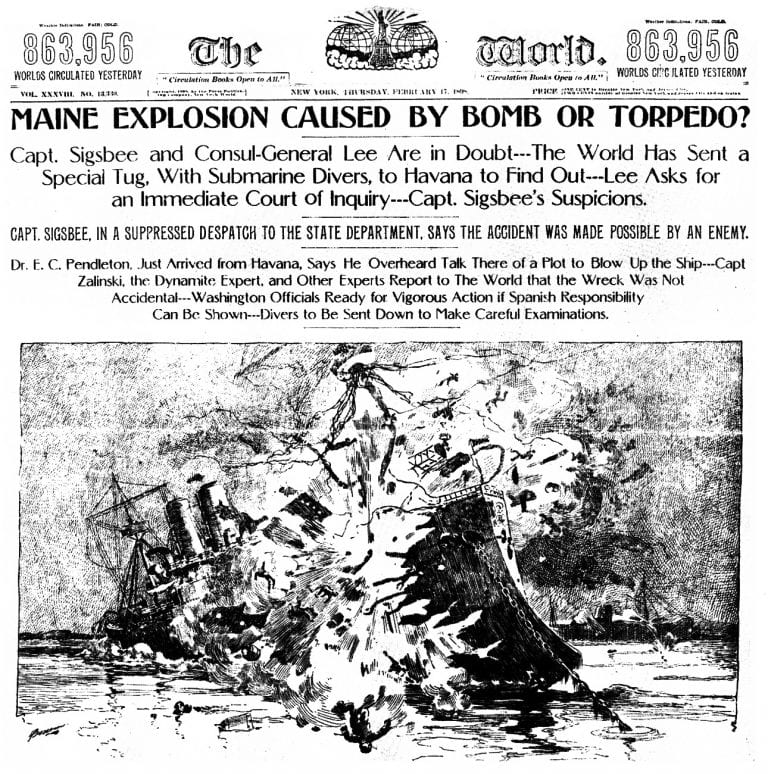Today, William Randolph Hearst is widely known for his rivalry with Joseph Pulitzer and his extreme yellow journalism. Pulitzer’s newspaper, the New York World, was already well established by the time Hearst moved to New York City and set up his newspaper, the New York Journal. Ironically, Hearst had bought the failing paper from a man who had bought it from Pulitzer’s own brother, Albert Pulitzer. Over time, the brothers became distant, as Joseph Pulitzer regarded his brother as frivolous.
Hearst and Pulitzer ran competing newspapers in the same area drawing from the same customers, which naturally led to each of them taking extreme measures to out-sell the other. Hearst turned to his vast family wealth to support the cost of his paper and lowered his paper’s price to one cent. He made headlines bigger and bolder, and made front-page news out of everyday occurrences. Pulitzer started to take notice of him when Hearst convinced Richard Felton, cartoonist for the New York World, to work instead for Hearst’s own New York Journal. Felton’s most famous work was a comic strip titled “The Yellow Kid”, which featured a character wearing yellow robes with a witty saying inked on his clothing. The bright coloring became a symbol for Hearst’s and Pulitzer’s rising competition, leading people to title extreme and exaggerated journalism “yellow journalism”.
One of the most famous examples of the power of yellow journalism occurred after the mysterious explosion of the Maine, an American battleship stationed in Cuba. The ship had been sitting in the harbor, with crew aboard, when something blew up near the bow and it slowly started to sink. At the time, the United States had shaky peace with the Spanish who lived in that area, and so many people immediately blamed the Spanish. The press eagerly took up this call, and devoted several pages a day explaining how the Spanish were at fault.
Newspapers were the main media of the time, and many people’s only source of current information. People believed almost anything they read, and so many Americans were incensed and called for revenge. Following the Maine accident, Congress called for war against the Spanish. Many historians today give credit to Hearst and Pulitzer and their yellow journalism techniques for starting the war.
At a meeting of prominent journalists in 1889 Florida Daily Citizen editor Lorettus Metcalf claimed that due to their competition “the evil grew until publishers all over the country began to think that perhaps at heart the public might really prefer vulgarity”. The conflict was dubbed “The Journal‘s War” by many due to Hearst’s immense influence in stoking the fires of anti-Spanish sentiment in the U.S. Much of the coverage by both The New York World and The New York Journal was tainted by unsubstantiated claims, sensationalist propaganda, and outright factual errors. The phrase, “remember the Maine, to Hell with Spain”, became a populist rousing call to action. The Spanish–American War began later that year.
Sources:
- https://publicdomainreview.org/collection/yellow-journalism-the-fake-news-of-the-19th-century
- https://commons.wikimedia.org/wiki/File:PulitzerHearstWarYellowKids.jpg
- https://williamrandolphhearstbio.weebly.com/yellow-journalism.html





